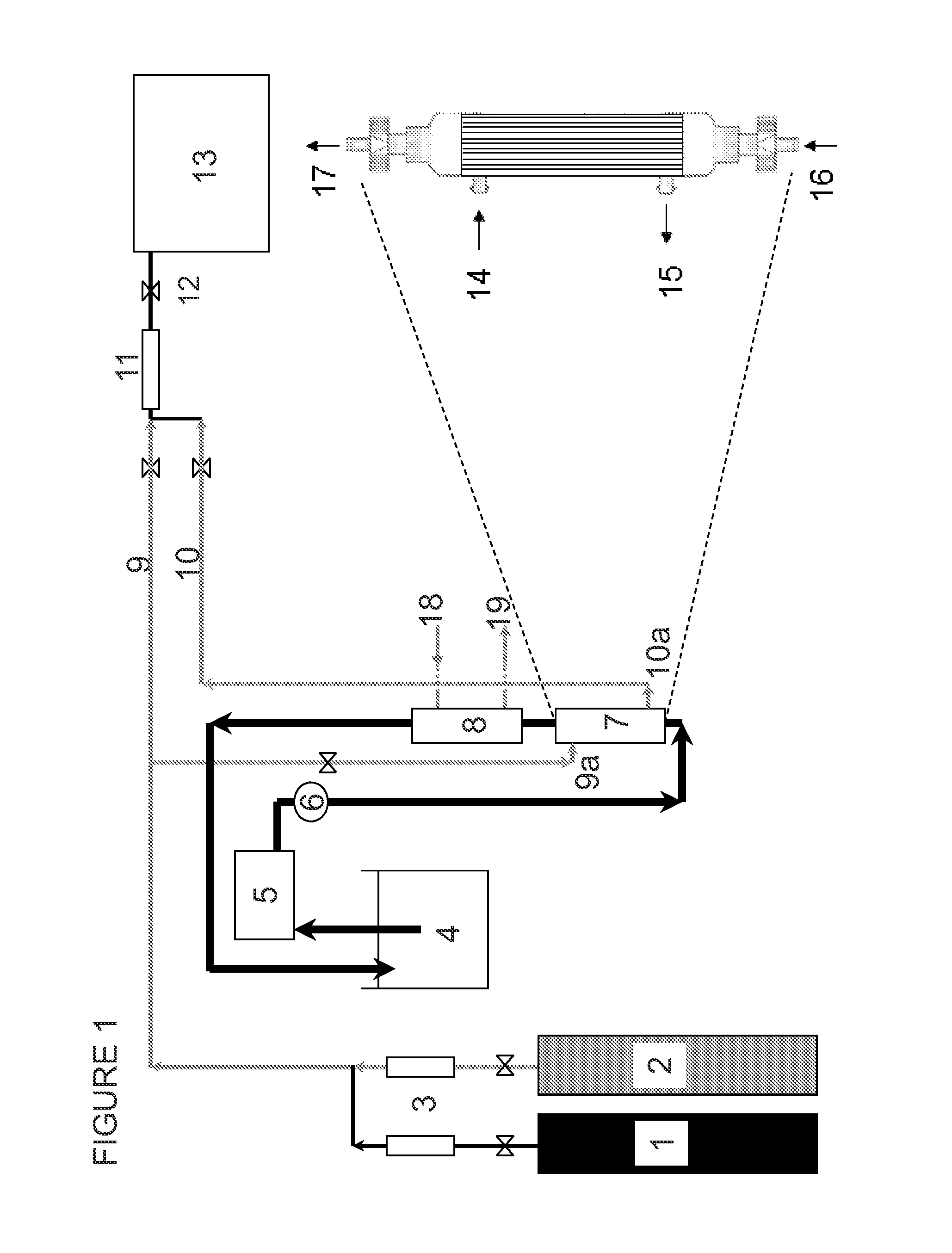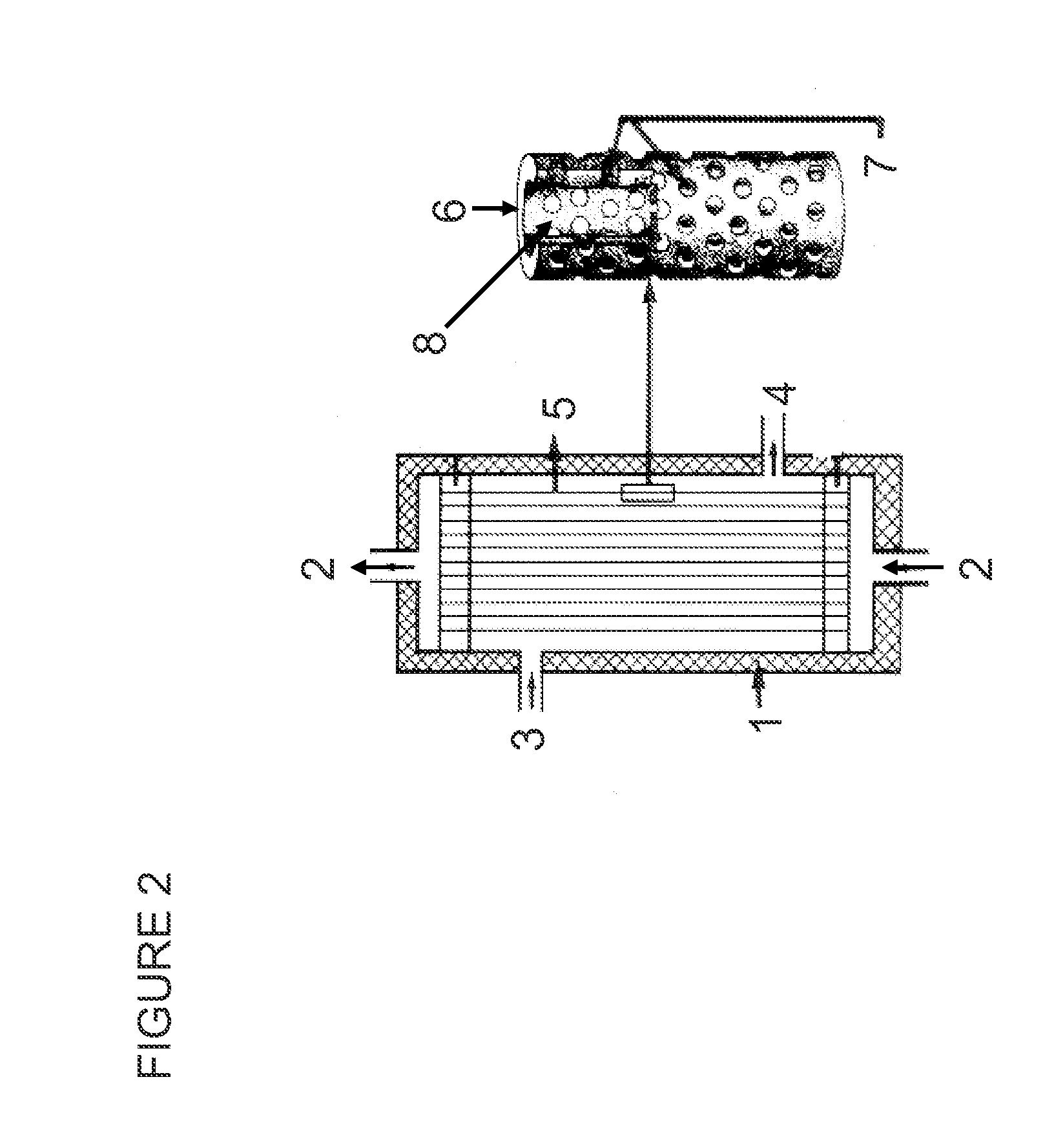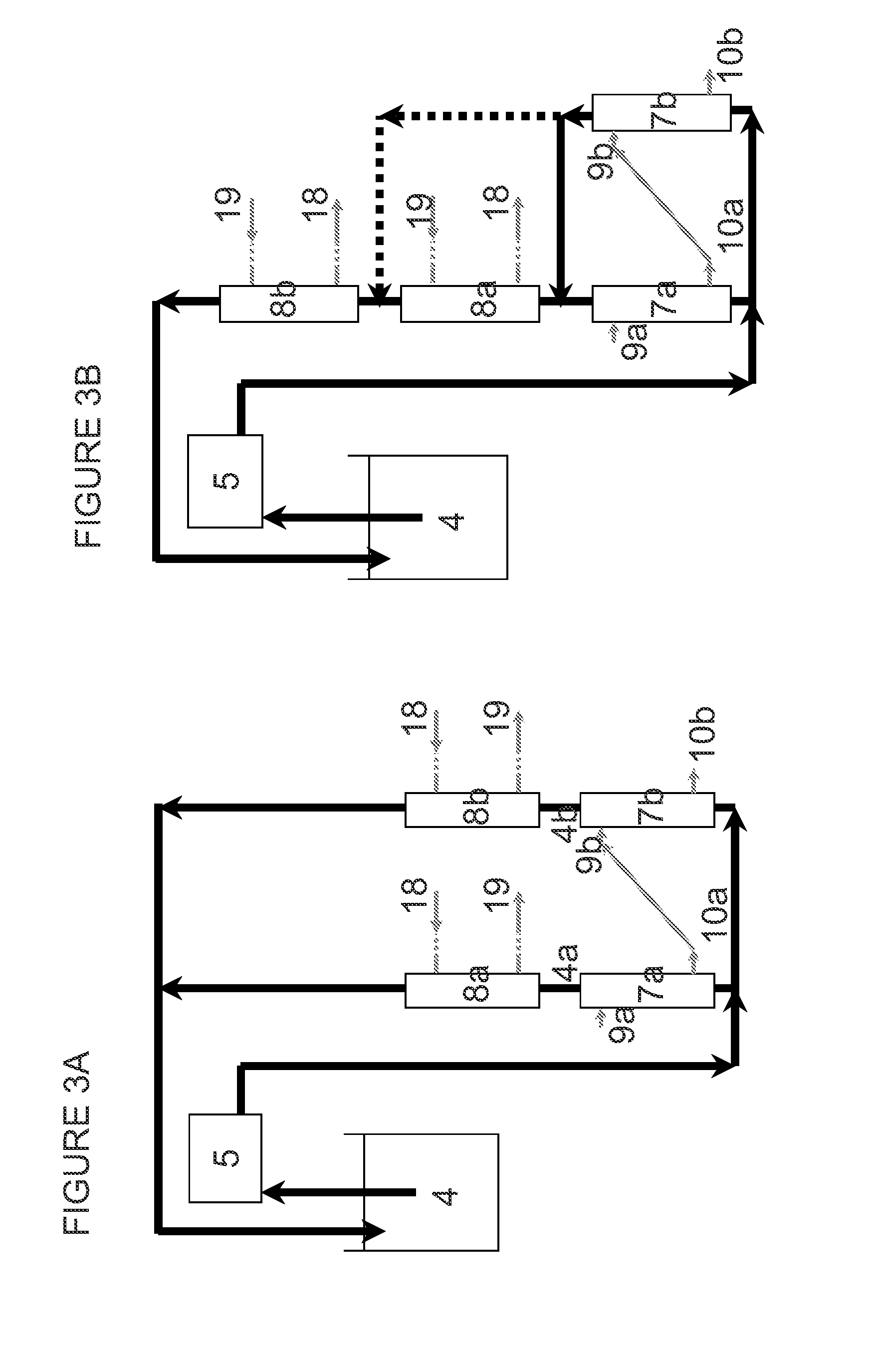Modular Membrane Reactor and Process for Carbon Dioxide Extraction
a membrane reactor and carbon dioxide technology, applied in the field of module membrane reactors and process for carbon dioxide extraction, can solve the problems of environmental pollution, high energy consumption overall (and especially in the desorption step), slow process, and use of ecologically questionable or toxic or corrosive compounds,
- Summary
- Abstract
- Description
- Claims
- Application Information
AI Technical Summary
Problems solved by technology
Method used
Image
Examples
example 1
Extraction of CO2 from a Mixed Gas Stream in a Modular Hollow Fiber Bioreactor
[0080]A lab-scale hollow fiber liquid membrane bioreactor (HFLMB) containing two modules one for hydration and one for dehydration was set up to selectively capture CO2 from a gas stream resembling a flue gas.
Hollow Fiber Liquid Membrane Bioreactor Set-Up
[0081]Porous hydrophobic hollow fiber membranes provide a high surface area of contact between the gas stream and carrier liquid. As a result they facilitate carbonation of a liquid or removal of CO2 from a liquid. The reactor consisted of two polypropylene hollow fiber membrane modules. The hydration module consisted of 2300 parallel hollow fibers with 0.18 m2 active surface area and average pore size of 0.01×0.04 micrometer (MiniModule® 1.0×5.5 part # G543, Membrana, Charlotte, N.C., USA). The de-hydration module was larger and consisted of 7400 parallel hollow fibers with 0.58 m2 active surface area and average pore size of 0.01×0.04 micrometer (MiniMod...
example 2
Extraction of CO2 from a Mixed Gas Stream in a Modular Hollow Fiber Bioreactor at 50° C.
[0088]This experiment was carried out essentially as described in example 1, with the minor changes described below. The sweep stream of nitrogen passed through the dehydration module was set at 60 CCM, and a bubbler was added to the reservoir (4, FIG. 1) to continuously bubble nitrogen for pH adjustment of the carrier liquid in the reservoir. The flow rate of the additional sweep gas in the bubbler was adjusted such that a constant pH of the carrier liquid (pH=9) in the reservoir was maintained (steady state). The carrier liquid was composed of a mixture of 0.5 M sodium bicarbonate and 0.5 M sodium hydroxide solution with pH=9 and maintained at 50° C.
Results
[0089]Table 2 shows the data collected during 11 days run time of the reactor at 50° C. Each data point is the average of the measurements made each day during run time of eleven days at room temperature. Measuring the activity of carrier liq...
example 3
Desorption of CO2 from a CO2-Rich Carrier Liquid in a Hollow Fiber Membrane Module
[0090]A lab-scale bioreactor containing one hollow fiber membrane module for desorption was set up to desorb or extract CO2 from a CO2-rich carrier liquid such as 1M sodium bicarbonate at pH 8.
Bioreactor Set-Up
[0091]The reactor consisted of a polypropylene hollow fiber membrane module for desorption. The desorption module consisted of 2300 parallel hollow fibers with 0.18 m2 active surface area and average pore size of 0.01×0.04 micrometer (MiniModule® 1.0×5.5 part # G543, Membrana, Charlotte, N.C., USA). These membranes are easy to scale-up to industrial scale and have been used in industry for wastewater treatment degassing and beverage carbonation. A schematic drawing of the bioreactor set-up is shown in FIG. 5. Briefly described the set-up was as follows: a carrier liquid (heavy black line in FIG. 5) containing the carbonic anhydrase passed through the lumens of the hollow fibers in the desorption ...
PUM
 Login to View More
Login to View More Abstract
Description
Claims
Application Information
 Login to View More
Login to View More - R&D
- Intellectual Property
- Life Sciences
- Materials
- Tech Scout
- Unparalleled Data Quality
- Higher Quality Content
- 60% Fewer Hallucinations
Browse by: Latest US Patents, China's latest patents, Technical Efficacy Thesaurus, Application Domain, Technology Topic, Popular Technical Reports.
© 2025 PatSnap. All rights reserved.Legal|Privacy policy|Modern Slavery Act Transparency Statement|Sitemap|About US| Contact US: help@patsnap.com



